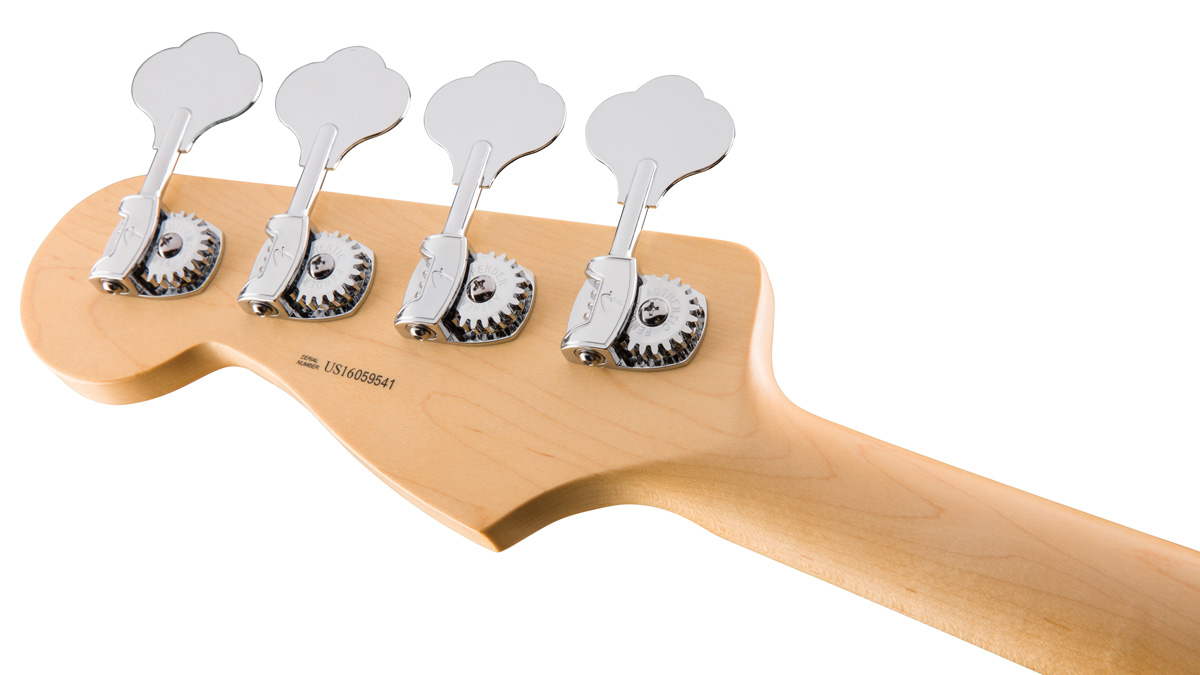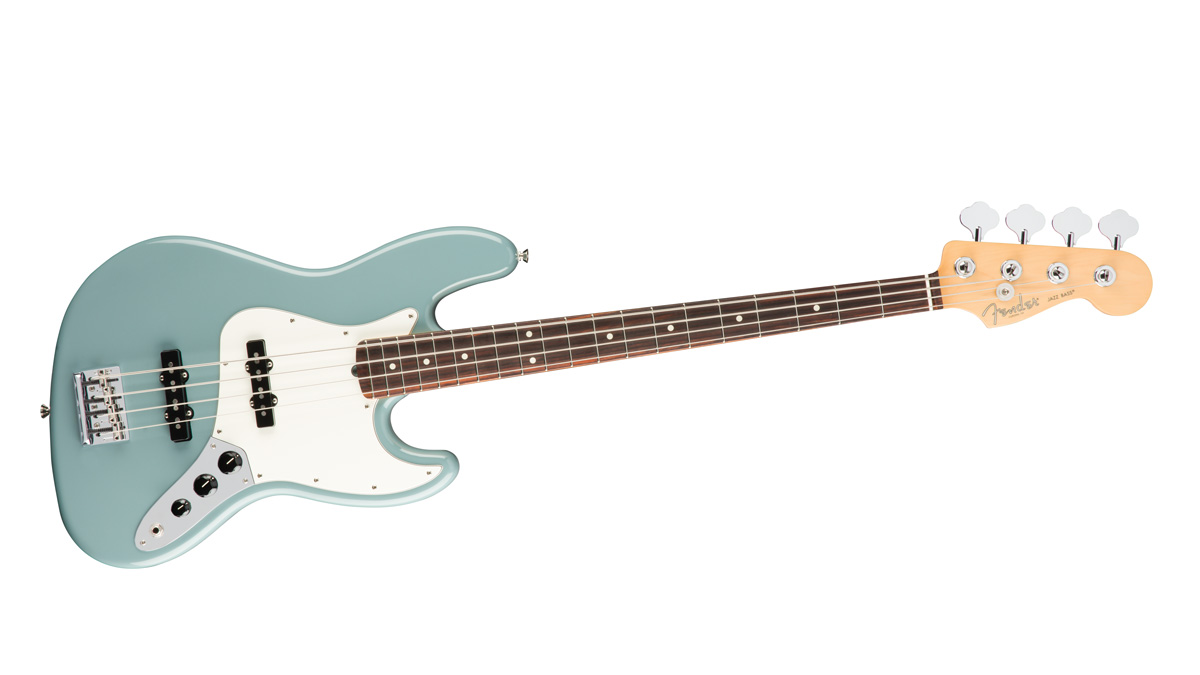MusicRadar Verdict
The Fender American Professional Jazz is the best ‘US standard’ version we’ve yet had.
Pros
- +
New pickups and other minor tweaks keep the Jazz at the top of the class.
Cons
- -
Nothing!
MusicRadar's got your back
You have to give credit where it’s due. For some years, in order to stay ahead of the competition, Fender has been executing a programme of tweaks and upgrades for their iconic US-made Jazz bass.
Historically, some changes have been better received than others; the ‘Posiflex’ graphite neck inserts introduced over 10 years ago have virtually eliminated neck problems, whereas the first versions of the three-bolt ‘micro-tilt’ system of the late 70s were quite possibly the cause of a few! [Allegedly, m’lud - Ed.]
But the last few years in particular have seen Fender’s quality in all areas reach new heights - and the current US Fender Jazz gives little away to all those mega-dollar boutique instruments that benefit from the same body shape and layout.
Build
Taking the new AP Jazz out of its high quality moulded case, the same as that of the US Elite series, everything is reassuringly familiar; the body is Fender Jazz-shaped and the pale maple neck has Fender Jazz dimensions. It’s the same, but different, because the new features which distinguish the AP from any previous versions are not immediately obvious.
Let’s start with the most important new addition - the new V-Mod pickups. In keeping with tradition the circuitry is passive, so there are no batteries or active controls. This is the purest, quietest and some would say best way to change the tone of your bass, but it does mean that you can’t boost frequencies like you can on an active bass, only cut them.
This in turn means that the quality and frequency range of the pickups is crucial. The good news here is that the AP Jazz has a pair of newly designed pickups from Fender pickup whiz Michael Bump. Alnico 2 magnets are used for the bass frequencies, while Alnico 5s take care of the treble side. The result is a balanced, flat sound that really lets the quality of the timbers shine through.

The ‘Narrow C’ neck profile feels slimmer than ever, especially at the nut end. The satin finish is cool and oh-so smooth under the left hand and the new higher profile narrow frets and rolled fingerboard edges make it super-fast and almost effortless to play. Other changes include a ‘Hi-Mass’ bridge and the tuners, which now have tapered shafts that coax the strings downward and onto the perfectly fitted bone nut - that’s a new development too.
Overall, it’s almost impossible to find fault with the build quality. Standard Fender basses were never really created individually by artisan luthiers. Instruments are finished and checked by skilled hand and eye of course, but they’ve always been mass-produced by machine and industrial process.
These days, quality control and manufacturing technology means tolerances are super-tight, finishes are flawless and electronics are quiet and reliable. The result is that the AP Jazz has a fit and finish that’s easily as good as any Fender bass that has come before.
Sounds
With both pickup volumes and the tone control on full, the sound is bright, full and attacking. The tone control may be passive, but the range from off to fully on is wide and linear, and that makes it very usable. Just over halfway sounded perfect through my Bergantino and Markbass rig.
With the bridge pickup maxed out and the neck pickup turned right down, a little less of the tone control was needed to quickly find that classic, tight bark when plucked hard back toward the bridge. Swapping round and backing off the bridge pickup gives you everything from mellow, soulful warmth to a zinging slap tone depending on how you set the tone control. It’s quick, it’s easy and boy does it sound good - and we mean really, really good.
It’s great to see Fender has used alder for the AP Jazz bass bodies. Alder is a little less dense than ash, and we think it lends the bass a slightly more refined and harmonically rich tone than some of the ash-bodied Jazz basses we’ve played over the years. There’s still plenty of that bright, attacking tone that makes the Jazz such a good choice for slappers, but here, with the alder body and bone nut you seem to get a more musical tone.
It’s bright and contemporary, but infused with the complex richness of the best early-60s Fender basses, many of which, like this one, had alder bodies.
We have a feeling that the new AP Jazz has been designed as much for a new generation of players as for the legions of traditional, loyal customers. Part of the reason we say this, at least for this particular review bass, is the contemporary ‘Sonic Grey’ colour. But it’s more than that. Jazz necks have always been slim and fast, but this one takes that to a whole new level; it can still get down and dirty of course, but it’s also a soloist’s dream. Well done, Fender.
“Every one of them said yes without hesitation": Hank Marvin and Roger Taylor have just remade a '60s classic for charity
Do you know where your money goes when you buy a gig ticket? A new report breaks it down
“Every note counts and fits perfectly”: Kirk Hammett names his best Metallica solo – and no, it’s not One or Master Of Puppets










